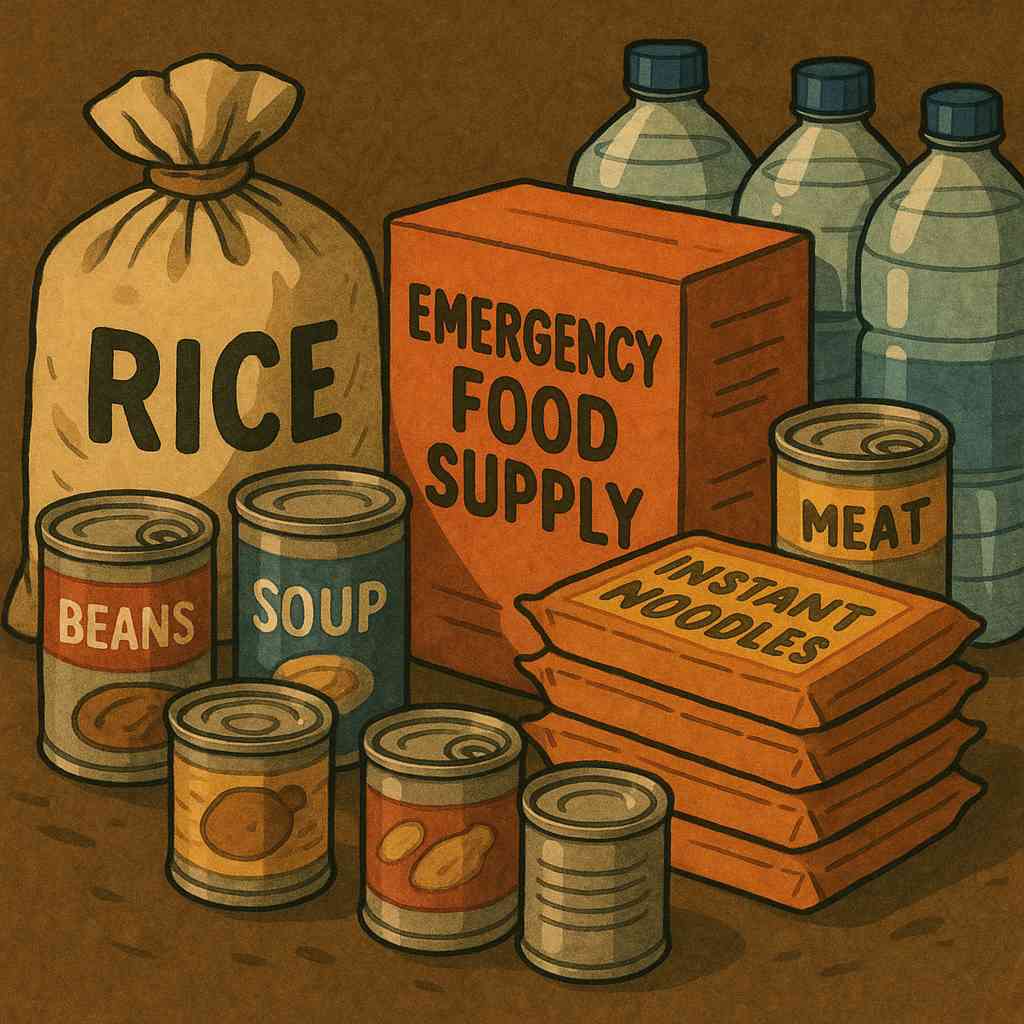Imagine a sudden disaster—stores empty, supply lines broken, no help coming for days or even weeks. If you haven’t planned your food supply, survival becomes a race against time. Panic buying won’t save you when shelves are bare. The only real defense? A carefully calculated emergency food stockpile. Here’s how much food you truly need to survive any crisis with confidence.
- ✅ Why Planning Emergency Food Supplies Matters
- ✅ How to Calculate Your Survival Food Needs
- ✅ Best Types of Food for Long-Term Survival
- ✅ Common Mistakes in Emergency Food Planning
✅ Why Planning Emergency Food Supplies Matters
Without reliable access to food, both physical and mental resilience deteriorates quickly. Hunger weakens decision-making, depletes energy, and increases the risk of injury or illness. In a disaster, help could be delayed for days or even weeks. Emergency food supplies aren’t just about eating—they’re about maintaining your strength, protecting your family, and buying time until normal life resumes.
✅ How to Calculate Your Survival Food Needs
At a minimum, plan for 2,000 calories per person per day for adults and older children. Here’s a quick formula:
- 1 adult = 2,000 calories/day
- Children (under 12) = ~1,200–1,600 calories/day
- Multiply daily need × number of days × number of people.
For example, a family of 4 planning for 14 days would need about 112,000 total calories. Factor in higher needs if anyone is elderly, pregnant, or has medical conditions. Always add at least 20% extra to account for stress, activity levels, or unforeseen delays.

✅ Best Types of Food for Long-Term Survival
Choose foods that are calorie-dense, nutrient-rich, shelf-stable, and easy to prepare:
- Rice, Pasta, and Grains: Bulk calories and long shelf lives.
- Beans and Lentils: High in protein and fiber.
- Canned Meat and Fish: Immediate protein sources without refrigeration.
- Powdered Milk and Eggs: Essential for nutrition and versatility.
- Peanut Butter and Nuts: High-fat, high-protein energy boosters.
- Dehydrated or Freeze-Dried Meals: Lightweight and very long shelf lives.
Rotate your stock annually and practice cooking with your stored foods so you’re not learning during a crisis.
✅ Common Mistakes in Emergency Food Planning
Avoid these pitfalls:
- Only Stocking Canned Goods: Variety matters for morale and nutrition.
- Ignoring Water Needs: Food is useless without clean water for preparation and drinking.
- No Manual Can Opener: Don’t assume power-operated openers will be available.
- Overlooking Dietary Restrictions: Account for allergies and health conditions when planning.
Preparation isn’t just about having \”some food\”—it’s about having the right food, in the right amounts, properly stored and accessible when you need it most.
In emergencies, food security is life security. Calculating your needs carefully and preparing ahead ensures your family won’t face hunger when disaster strikes. Start today: make your list, stock wisely, and regularly review your supplies. In survival, fortune truly favors the prepared.
✅ Frequently Asked Questions (FAQ)
- Q1. How much food do I need for a family of four for one month?
Roughly 240,000 to 260,000 calories total, depending on age and activity levels. Add extra for safety. - Q2. Can I survive only on canned goods during a disaster?
It’s possible short-term, but balance with dry goods and nutritional variety for better health and morale. - Q3. Should I prepare differently for short-term versus long-term emergencies?
Yes. Short-term kits can rely more on convenience foods, while long-term storage requires rotation and careful planning. - Q4. What’s the shelf life of survival food?
Properly stored grains and freeze-dried foods can last 10–30 years; canned goods typically last 2–5 years past the best-by date.
Need help planning your pantry? Check out our guide on long-term food storage strategies to maximize your survival stockpile.
For official food storage guidelines, visit the Ready.gov Food and Water Storage Guide.

